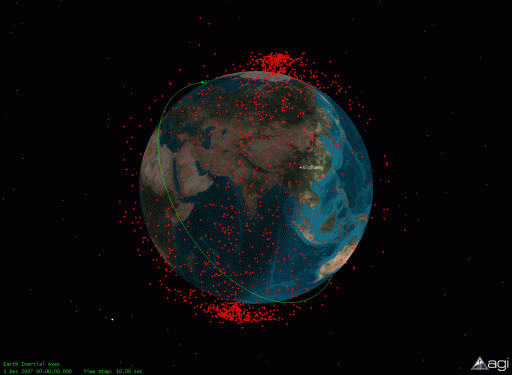NASA needs strategic plan to manage orbital debris efforts
September 6, 2011

International Space Station‘s orbit (in green) and the Debris Ring (red) from the Chinese ASAT test (image from December 5, 2007). (Credit: CelesTrak.com)
NASA should develop a formal strategic plan to better allocate resources devoted to the management of orbital debris, says a new report by the National Research Council titled Limiting Future Collision Risk to Spacecraft: An Assessment of NASA’s Meteoroid and Orbital Debris Programs. In addition, removal of debris from the space environment or other actions to mitigate risks may be necessary.
There is enough debris currently in orbit to continually collide and create even more debris, raising the risk of spacecraft failures, the report notes. A recent near-miss of the International Space Station underscores the value in monitoring and tracking orbital debris as precisely as possible.
“The current space environment is growing increasingly hazardous to spacecraft and astronauts,” said Donald Kessler, chair of the committee that wrote the report and retired head of NASA’s Orbital Debris Program Office. “NASA needs to determine the best path forward for tackling the multifaceted problems caused by meteoroids and orbital debris that put human and robotic space operations at risk.”